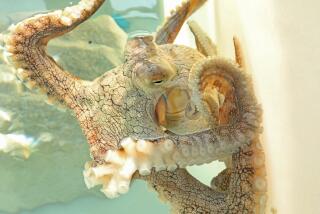Washington state OKs oyster bed pesticide, but federal agencies raise concern

Workers spread oyster seed in Washington state in 2008. Oyster growers today are concerned about the threat of shrimp to the oyster population.
For decades, oyster growers in southwest Washington have battled to control native shrimp that burrow in the mudflats and make it hard for oysters to grow.
Now, after getting state approval, a group of shellfish farmers plan to spray a widely used neurotoxic pesticide on up to 2,000 acres of commercial shellfish beds in Grays Harbor and Willapa Bay. They say it’s a safe way to keep in check a threat to the area’s multimillion-dollar shellfish industry.
But critics, including the U.S. Fish and Wildlife Service and the National Oceanic and Atmospheric Administration, worry about unintended harm to other species. The plan is premature, they say, with too many unknowns about the pesticide’s effects on other organisms, including those that are a food source for threatened species.
With public and customer concerns rising, one of the big players, Taylor Shellfish Farms, said late Friday that it would back away from treating its oyster beds with imidacloprid.
In comments to the state, NOAA noted that the state Department of Ecology “is clearly aware that imidacloprid is a persistent broad spectrum pesticide that will kill nearly all benthic (sediment-dwelling) organisms on acreage directly treated.”
Research findings “clearly indicate that effects and damages will not be limited to the treatment sites,” the U.S. Fish and Wildlife Service said.
The Ecology Department approved the permit in April, saying the pesticide is less toxic than one previously used, and which is being phased out, and concluded in its environmental review that it’s unlikely to result in significant harm to the environment.
The permit issued to Willapa-Grays Harbor Oyster Growers Assn., a group of about two dozen growers, requires monitoring to ensure there aren’t significant harmful effects, the agency said.
Helicopter spraying over the two estuaries could begin as early as May 17. Areas can only be sprayed once a year, during daytime low tides. Up to 2,000 acres may be treated per year, so up to 10,000 acres could potentially be sprayed over the five-year permit, the department said.
Willapa Bay is the largest producer of farmed oysters in the U.S., mostly nonnative Pacific oysters.
The growers’ group president, Don Gillies, whose ancestors began farming oysters in Willapa Bay in the 1860s, said the pesticide represented the best bet for controlling the shrimp that churn up mudflats, causing oysters to sink into the mud and suffocate.
He said growers have tried numerous methods to control the shrimp, including crushing them, using explosions and injecting a clay barrier, all without much success.
Arguing in part that the new pesticide is less effective compared with the previously used insecticide, the growers also sought to more than double the 800 acres previously sprayed, an increase questioned by NOAA.
In March 2013, the U.S. Environmental Protection Agency noted “a number of uncertainties” that require more data but approved the pesticide’s use on the shellfish beds for Grays Harbor and Willapa Bay.
The ghost and mud shrimp are native to the area and play a crucial role in the ecosystem, NOAA and the U.S. Fish and Wildlife Service said. They acknowledged the challenge oysters growers face but urged investigating other ways to grow oysters without chemical control.
“We think [the] shellfish industry plays an important role in our local and state economy, but we also think that the health of these incredibly important estuaries shouldn’t be compromised in support of the industry,” said Trina Bayard, director of bird conservation for the Washington office of the National Audubon Society.






